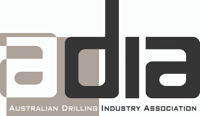Blade Selection Guide
Blade Selection Chart
Here at Asahi we are committed to helping customers find the right blade for the job. With such a large variety to choose from why not download our Blade Selection Chart, by clicking here, and let us do the hard work for you...
Material Properties
The principal variable to be considered when choosing your blade is the aggregate type and size.
When attempting to match blade specifications to aggregate type it is useful to think of the aggregate in terms of its hardness, abrasiveness and density. These are relative terms and generally speaking very hard, high density, lower abrasive aggregate concretes require fine diamonds in a soft bond at low concentration whereas soft, low density highly abrasive aggregates call for coarse diamond at higher concentrations.
Differences in the hardness, density and abrasiveness of aggregates may not be readily apparent, but some subjective judgment must be made if the optimum matrix (bond + diamond) is to be found.
Generally speaking, concrete is a loosely bonded highly abrasive material composed of aggregate, sand, cement and water. There are many different types of concrete including what is commonly called hard, soft, old, new, pre-stressed and reinforced. The aggregate type of each will vary from area to area and the hardness alone may vary from -5 to 7+ on the Moh’s Scale. Concrete strength will vary according to mix and curing time and CUTTABILITY will be affected by the presence of reinforcing.
As the blade is traversed through the concrete at a specific depth, individual diamond crystals remove the material with a scraping action generating chips which abrade the bond to expose fresh cutting points. As each crystal wears, the chip characteristics change resulting in a change in the wear pattern of the bond which in turn affects the cutting action.
Larger, harder and sharper chips abrade the bond more rapidly than softer and smaller chips. It is for this reason that the harder bonds are selected for green concrete and the softer bonds for flint aggregate concretes.
It is important to note that chip size is a function of many factors apart from the material being cut.
Cutting conditions and blade design also determine the characteristics of chips generated. However, where all factors remain constant it is possible to vary the bond properties according to the blade wear pattern generated by the chips to achieve the desired blade life and speed of cut.
Re-tipping, Refurbishment and Repairs
When your blade runs out of diamonds or stops cutting, don't replace it, let Asahi re-tip it! We offer a full blade re-tipping service at our Sydney factory. Click here for more information.






